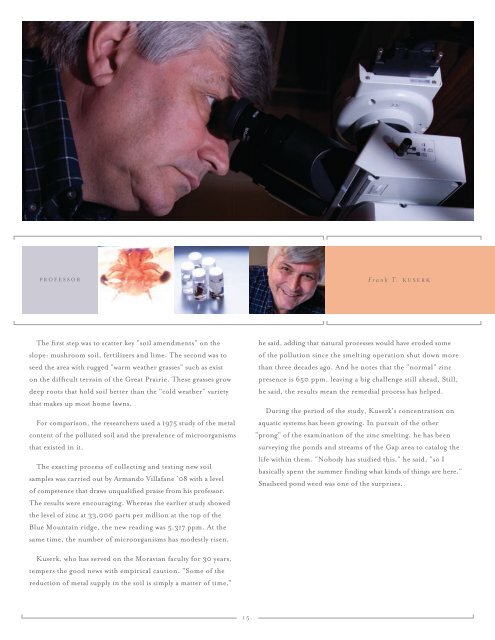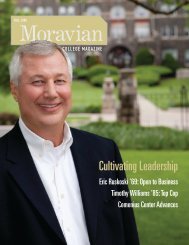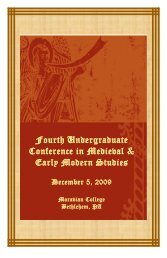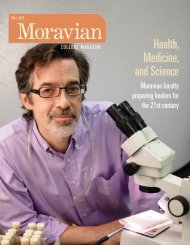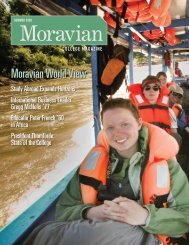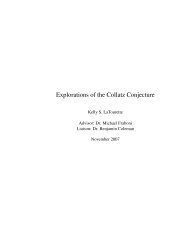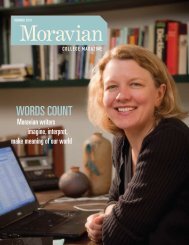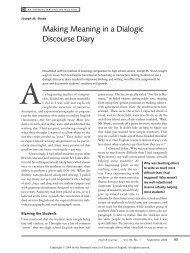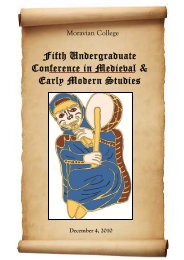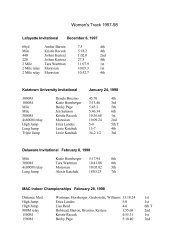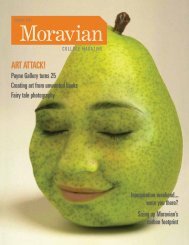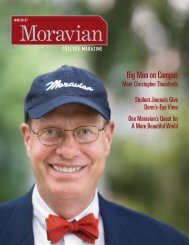Create successful ePaper yourself
Turn your PDF publications into a flip-book with our unique Google optimized e-Paper software.
ProfeSSor<br />
The first step was to scatter key “soil amendments” on the<br />
slope: mushroom soil, fertilizers and lime. The second was to<br />
seed the area with rugged “warm weather grasses” such as exist<br />
on the difficult terrain of the great Prairie. These grasses grow<br />
deep roots that hold soil better than the “cold weather” variety<br />
that makes up most home lawns.<br />
for comparison, the researchers used a 1975 study of the metal<br />
content of the polluted soil and the prevalence of microorganisms<br />
that existed in it.<br />
The exacting process of collecting and testing new soil<br />
samples was carried out by Armando villafane ’08 with a level<br />
of competence that draws unqualified praise from his professor.<br />
The results were encouraging. Whereas the earlier study showed<br />
the level of zinc at 33,000 parts per million at the top of the<br />
blue Mountain ridge, the new reading was 5,317 ppm. At the<br />
same time, the number of microorganisms has modestly risen.<br />
kuserk, who has served on the Moravian faculty for 30 years,<br />
tempers the good news with empirical caution. “Some of the<br />
reduction of metal supply in the soil is simply a matter of time,”<br />
15.<br />
Frank T. kUSerk<br />
he said, adding that natural processes would have eroded some<br />
of the pollution since the smelting operation shut down more<br />
than three decades ago. And he notes that the “normal” zinc<br />
presence is 650 ppm, leaving a big challenge still ahead. Still,<br />
he said, the results mean the remedial process has helped.<br />
during the period of the study, kuserk’s concentration on<br />
aquatic systems has been growing. In pursuit of the other<br />
“<br />
prong” of the examination of the zinc smelting, he has been<br />
surveying the ponds and streams of the gap area to catalog the<br />
life within them. “nobody has studied this,” he said, “so I<br />
basically spent the summer finding what kinds of things are here.”<br />
Snailseed pond weed was one of the surprises.


